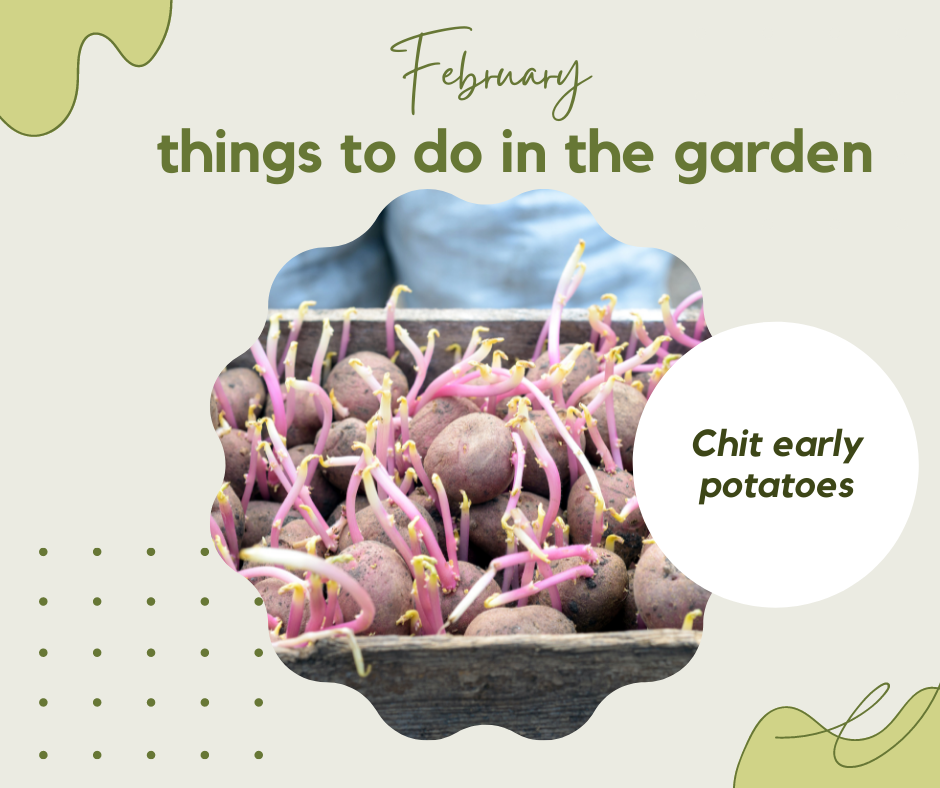
There is much debate as to whether you need to chit seed potatoes, but if you decide to chit, here’s how.
To chit a potato simply means to break the dormancy of the seed potato and encourage shoots to form prior to planting. Seed potatoes planted directly into the soil will grow perfectly well regardless of the variety. Some people prefer to chit early and second early potatoes to give them a head start. Main crop varieties have a much longer growing season so chitting doesn’t give the potatoes much advantage.
First early seed potatoes, which produce ‘new potatoes’, are planted between mid-March and mid-April. At this time of year the soil is still cold and probably wet too. Chitting gives these potatoes about two weeks head start over those that have not been chitted.
Chitting can be done from late January to mid-February, depending on where you live and garden. It takes two to three weeks for shoots to develop sufficiently, so start to chit a few weeks before you want to plant.
The best method is to place the seed potatoes in seed trays or egg boxes with the end with the most ‘eyes’, facing upwards. It is the eyes which will form sprouts or shoots.
Place the trays or boxes in a light, dry room or greenhouse. A temperature of between 7 and 12 degrees C is best. When the shoots are about 1-2cm high keep 3 or 4 on the potato and remove out the rest. If you want lots of small potatoes, leave on more shoots.
The chittied potatoes can then be planted out. If you feel that there may still be a risk of frost, it is wise to cover the new shoots.
Take care when planting out chitted potatoes so as not to damage these new, delicate shoots.
